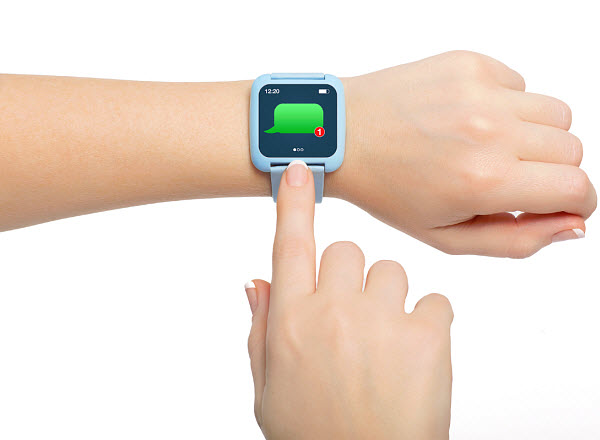The company has now filed for a patent for this type of wearable technology device.
It looks as though Microsoft is looking into becoming another player in the smartwatches game, as the U.S. Patent Office has now publically released an application that was made by the software giant for a design that could place the company in competition against Samsung, Google, and potentially Apple (whenever it makes its own entry into the market).
This application was just released last week, though it was initially filed back in October 2012.
The Microsoft application details various plans for a type of wristwatch that could be used as a music player, a fitness tracker, a messaging device, and to make phone calls. The face for these smartwatches would be able to detach from their bands in order to connect it to a charger. If the company is, indeed, pursuing wearable technology (and this patent application would suggest that it is), the Microsoft will be joining the companies that are making a rather late entry into the market, as Apple is doing.
Other smartwatches have not only been on the market for a while, but they have had multiple generations.
The Galaxy Gear wearable technology, and the Pebble, are good examples of devices that have now had the opportunity to start to build a customer base, to market themselves, and to release more than one version of the device as a better understanding of the use and the tech is created. Another large participant in this market will be Google, when the Moto 360 is released in the United States, this summer. Rumors of Apple’s wearables have been circulating for ages, but as is the tradition from that company, nothing official has been heard about a specific device.
There is also existing competition outside of the giants in the industry, as many startups have been creating their own devices that have started to become popular. Pebble may have only been a startup, but it is still grouped among the serious players as it managed to sell 400,000 of its devices in 2013.
The patent doesn’t make it clear exactly what Microsoft’s smartwatches will be or even if they will be released to the public. As of the time of the writing of this article, the company had yet to release a statement on the matter.
While mobile chips are becoming faster and more powerful, wearables have now upped the ante.
The mobile chips in high end smartphones and tablets are growing faster and ever more powerful, but those devices aren’t astounding consumers who were buying them as fast as they could hit the shelves, so chipmakers may start looking toward wearable technology for their next area of explosive growth.
Wearables could actually provide chipmakers with the challenge that they need for the next few years.
The growth curve could be quite the steep one as long as those companies can provide what is needed in order to make consumers love wearable technology as much as they have come to love their smartphones and tablets. According to principal analyst, Linley Gwennap, from The Linley Group, it is too early to say whether or not chipmakers will actually grab hold of this opportunity, or even if wearables will turn out to be the next big tech trend, as many of the industry giants are hoping.
Currently, the wearable technology remains a market that is moving less than 10 million units per year.
Surveys are currently suggesting that while consumers have initially been attracted to wearables such as fitness trackers, all too many of them are finding themselves forgotten and buried under a pile of other devices that were enjoyed for their novelty but were then forgotten once that had worn off. Furthermore, the best devices – such as some of the smrtwatches that have been launched – are prohibitively expensive for the majority of consumers and end up collecting dust on the shelves.
Gwennap explained that “We’re talking about [US]$200 or $300 for a smartwatch today. That’s kind of a two-spouse decision.” He added that if the doors are to open for the majority of consumers to participate, then wearable devices under the $100 price barrier will need to start becoming available.
He explained that he feels that one of the best ways to move these devices will be to bundle them with smartphones, for example, the case of Samsung Galaxy Gear being sold along with the smartphones as a bundle, so that as little as $50 can be charged for the smartwatch.
Cheaper wearable technology will be dependent on more powerful and yet less expensive chips. Should this be achieved, it could be an area that will be highly lucrative in the not too distant future.



